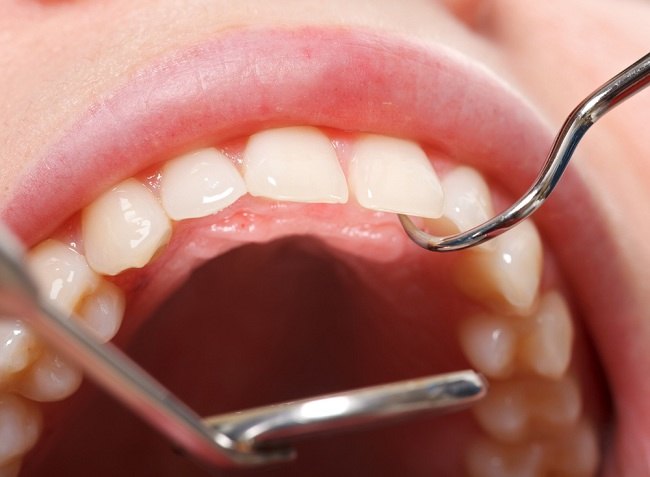Here's how to get rid of plaque on teeth
Dental plaques can cause various damage to your teeth and gums. Fortunately there are several ways to remove dental plaque which is quite effective for maintaining your oral health. .
The dental plaque looks like a thin and thin yellow or white layer that is usually between the teeth and along the gum border on the teeth. Dental plaque is formed due to the attachment of various kinds of bacteria in the teeth, and will be more visible when the teeth are not brushed.

Dental plaques occur when cakes, sweets, milk, soft drinks, or carbohydrate foods are left in the teeth. Then the bacteria that live in the mouth secrete acids that are capable of destroying the tooth enamel (the outermost protective layer of the tooth) and causing cavities.
Dental Plaque Disease
If left unchecked, plaque can cause damage to the teeth, gums, even bones supporting the teeth, in the form of:
- Tooth with holes or rot. If left untreated, damage can spread to the pulp (root layer) in the middle of the tooth and cause toothache and abscesses.
- Calculus (tartar), which is a layer of plaque that hardens like cement that cannot be removed with a toothbrush.
- Gingivitis, is an inflammation of the gums that makes the gums red, swollen, and painful.
- Periodontitis, is an infection of the gums that spreads and causes damage to the tooth bone around the jaw. Periodontitis occurs when gingivitis gets worse. This disease results in the formation of a gap between the teeth and gums. If not treated, the teeth will slowly break away from the gums and eventually dislodge.
Prevent and Eliminate Dental Plaque
Aside from making teeth look yellow and causing disease, dental plaque can also make a smile not beautiful to look at. How to prevent and remove plaque on the teeth can be done in various steps as follows:
- Brushing your teeth. The best way to fight plaque is to brush your teeth twice a day, morning and night. Brushing your teeth twice a day helps prevent plaque formation and destroys any plaque that has begun to form. The bacteria that cause plaque will continue to develop, so brushing your teeth must be done regularly.
- Brushing your teeth with a soft-bristled toothbrush and toothpaste containing fluoride , for two minutes. Flouride protects teeth by binding to enamel and creating a harder surface. Also make sure that all areas of the mouth (teeth, gums, tongue, inner cheeks) are brushed clean.
- Change toothbrushes every 3-4 months.
- Use dental floss at least once a day (before going to bed at night) to remove bacteria and food waste.
- Discuss with your dentist about using mouthrinse or mouthwash. This is different from mouthwash, which only serves to refresh the breath. Some types of mouthwash can make the oral cavity dry and can actually help the development of certain types of plaque.
- Avoid sweet and sticky foods and drinks such as candy, raisins, chocolate-coated snacks, or soft drinks.
- Consume balanced foods and limit snacks. If you want a snack, choose pure yogurt (without flavorings and additional sweeteners), cheese, fruit, or raw vegetables. Besides being able to remove food scraps, vegetables such as celery also help saliva neutralize the acid that causes plaque.
- Visit the dentist at least every 6 months to check and clean your teeth.
If your teeth are covered with plaque, don't worry because the plaque can be removed. Dentists can take care to clean teeth from dental plaque. The re-formation of plaque on the teeth can be prevented by maintaining oral hygiene. The plaque is gone, the teeth are healthy, the laughter becomes more loose.
Label : Health
Comments
Post a Comment